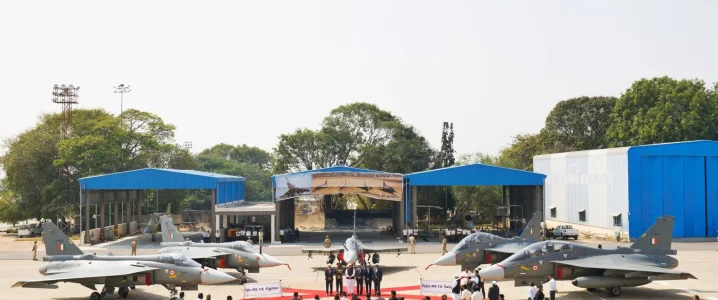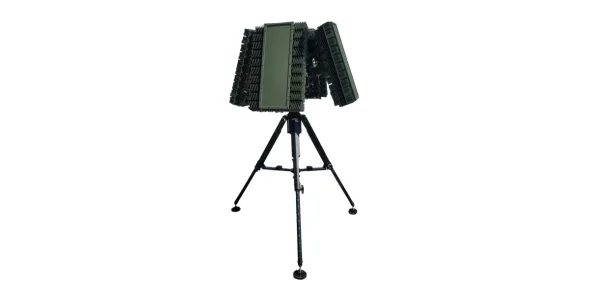- Joined
- Jun 30, 2024
- Messages
- 1,812
- Likes
- 11,641
They didn't make the bay long enough. It's not a carry issue.Modern CCM are all below 120kg weight... ASRAAM @88 KG ... so 2 can be carried internally.
They didn't make the bay long enough. It's not a carry issue.Modern CCM are all below 120kg weight... ASRAAM @88 KG ... so 2 can be carried internally.
Yeah, looks like that is the case.
Will all three versions come with booster of their own? I had hoped for a non-booster aided base missile acting as the Dart for other versions. **Sigh**
@Adm_Kenobi any thoughts
My thinking is IAF is just playing safe and has asked DRDO to show reduced ranges of Akash-NG to 30km so it won't collide with parallel MRSAM missile project as both are having similar ranges. There were multiple proofs which gave Akash-NG range as 80km.From the slide where all three variants of Kusha were shown, it was evident that M1 was Akash NG. But M2 and M3 second stage ie the actual missile was slightly different. It wasn't an exact NG copy.
Then we came to know that even M1 will have a booster ro increase its range since the original desired range of 150 km wasn't achievable. So M1 got a booster.
Now here comes the most important question. If the dart is Akash NG and M1 has a 120-150 km range, then how is it possible that NG has a range of just 50 km? Most sources quote it as 30 km. The booster isn't that chonky that with its inclusion, missile range increases to 120- 150 km.
So either Akash NG has a higher range OR
The second stage is another missile.

My thinking is IAF is just playing safe and has asked DRDO to show reduced ranges of Akash-NG to 30km so it won't collide with parallel MRSAM missile project as both are having similar ranges. There were multiple proofs which gave Akash-NG range as 80km.
The same approach was adopted by IAF for Tejas Mk-2 which became LCA AF Mk-2 from MWF to seprate and save the MRFA project.
Do you have any info on the dimensions of Akash-NG?
Post in thread Akash-NG (Next Generation)My thinking is IAF is just playing safe and has asked DRDO to show reduced ranges of Akash-NG to 30km so it won't collide with parallel MRSAM missile project as both are having similar ranges. There were multiple proofs which gave Akash-NG range as 80km.
The same approach was adopted by IAF for Tejas Mk-2 which became LCA AF Mk-2 from MWF to seprate and save the MRFA project.
Do you have any info on the dimensions of Akash-NG?
Do share those chartsI have to search for the dimensions.
But I have some charts and graphs showing the time of operation of 1st and 2nd pulse of Akash NG and the velocity achieved as a result.
In that graph, max distance travelled by the missile is shown as 50 km.
I firmly believe this is the max range. Let me find those charts.
Yep then no doubt the dart is Akash-NG itself and the range is 80km.Post in thread Akash-NG (Next Generation)
https://defenceforumbharat.com/threads/akash-ng-next-generation/post-39085
250mm diameter,
<4850mm length, (I suspect 4800mm)
Dual pulsed rocket Motor
Pretty much yeahMy thinking is IAF is just playing safe and has asked DRDO to show reduced ranges of Akash-NG to 30km so it won't collide with parallel MRSAM missile project as both are having similar ranges. There were multiple proofs which gave Akash-NG range as 80km.
It should be slightly bigger than even LR-SAM in terms of dimensions so unless they have suddenly decided to use a 500lbs bomb as warhead, there's no point in assuming its range to be anything less than LR-SAM's 100km (dual pulse).
These are wideband vivaldi arrays.
View: https://x.com/Mark99xm/status/1888604167922405827?t=Qjq4fABYRtL0TTokNCSmqg&s=19
no orders sir im sureThese arrays can also be used as jammer ,with 2400 elements imagine the jamming power
In comparison ASPJ of mk1a is having only 16 elements.
You know what? CG should set up a PSU whose only goal is to productionize all these R&D, and reap the profits. Create a new version or PSU or something which exempts it from many of the nonsense plaguing current ones. Something like China's CETC should be the endgoal.

China Electronics Technology Group Corporation - Wikipedia
en.wikipedia.org
These guys make everything from survaillance electronics, radars, x-rays, power electronics etc. All from decades of R&D from their various subsidiaries and linked-universities. There is no reason why something like this can't be replicated by the government, considering these DRDO labs are the only ones doing any real R&D work in this country. Why should they do the hard work and then it away to our rent seeking private sector? If PSUs had the ability to mass manufacture these things, maybe then only would our private dhandos actually bother to do real research
Let's just hold our horses and wait for more details to come outView attachment 24373
View attachment 24374
And are both same?
> This new missile follows a schema of tail stabilizing fin and front CAS Vs tail CAS and mid body wing of VSHORAD
> This new missile has a Mistral type multi-faceted seeker dome Vs hemispherical dome and aerospike of VSHORAD
> The RCS thrusters are placed way up, near the CAS of the missile
> The RCS thrusters are perfectly perpendicular to the fuselage of the missile, firing 90° from the direction of travel
> RCS thrusters can be used just once, hence we see 5 thruster for each of the 8 directions so you can change course atleast 5 times.
[if I'm not wrong then Mr. Roy's claim was 32 thrusters]
And I'd say, well thanks, for proving most of my points using a different missile
Would be interesting to know why they're using a 50 years of obsolete technology from Dragons when there are more elegant solutions available for man-portable applications
View attachment 24375
Feast your eyes on this.
LA 5037 is in the bottom left corner.
LT 5207 is the bottom right corner.
View attachment 24579
There's a new trainer in yellow primer in the right check out hangar. This is from the 10 trainers batch in the 83 Tejas mk1A order.
There's a new mk1A in primer in the left check out hangar. Must be LA 5038.
Silly question, what if the attackers are coming from opposite direction?Naacho bc.
View attachment 24590

